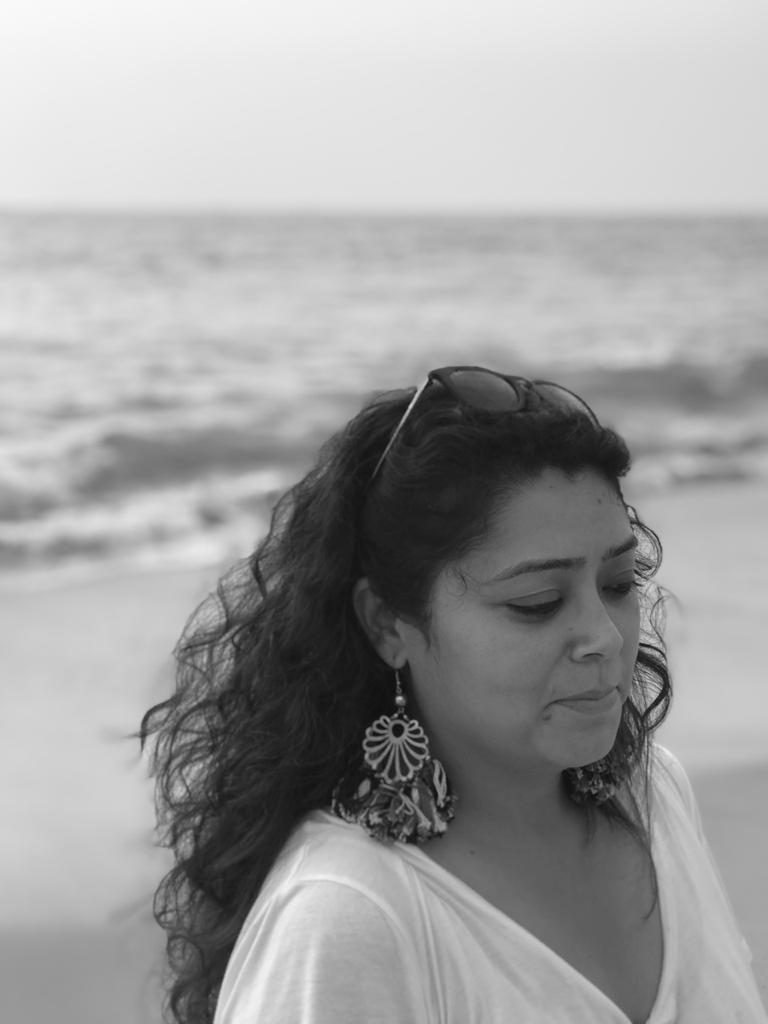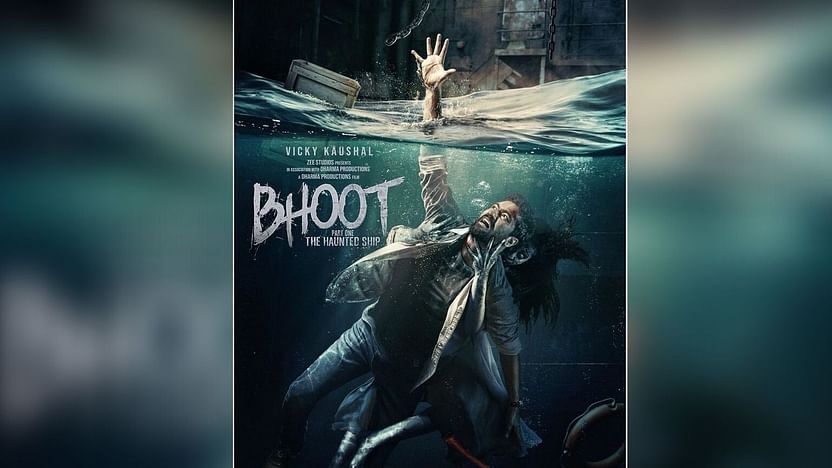What is common between films like Dostana, Wake Up Sid, Yeh Jawaani Hai Deewani, 2 States, Ae Dil Hai Mushkil, Student of the Year, Kalank… Well, besides the fact that they are all Dharma Productions, chances are that you have been floored by the stunning art direction in all of these films – Be it the contemporary yet aspirational milieu of Miami-based Dostana, Ae Dil Hai Mushkil’s London high-life or the royal charm of a Lucknow wedding, the realistic backdrop of Wake Up Sid or the larger-than-life grandeur and opulence of the kinds that we saw in Kalank! And there’s one name behind it all – AMRITA MAHAL NAKAI! In an exclusive interview with Aakanksha Naval-Shetye, the acclaimed and the highly-celebrated production designer reveals all about her unexpected foray into Bollywood, the journey so far, facing the challenges and carving her own niche. She also talks about juggling a high-pressure dream job with being a wife and a mother on the personal front! Excerpts:
Did you always aspire to be an art director or be a part of the movies?
Far from it! My father was in the Air Force and I grew up travelling the country and my teenage years up until college in Chandigarh. And all through my childhood and growing years I have never been influenced by Bollywood or films so to say. Later I graduated in Fine Arts only because I wasn’t keen on studying Science or Commerce.

So how did someone who was not aspiring for the movies at all, end up becoming such a renowned name in Bollywood?
Well, I would say that one thing led to another for me professionally. After completing my studies, I came to Mumbai. And one of the days I was just hanging out, assisting my sister at the Yash Raj office, when we ran into Sharmishta Ma’am (well-known production designer Sharmishta Roy). At the time she was looking for an assistant and my sister suggested that I join her and I did. So, I assisted her on Bunty Aur Babli (2005), Salaam Namaste (2005), Kabhi Alvida Naa Kehna (2006), The Namesake (2006). I have literally learnt it all on the job. Later when Sharmishta Ma’am moved to the US after her marriage, Tarun (Mansukhani) offered me Dostana (2008) which I was very reluctant to do, because I was still unsure if I could do it on my own. But Ma’am met me and told me that I have her whole team to use and that I should do it. She was still working, like she would do one film a year, but she had moved to the US. So, she was the one who pushed me to take up Dostana, and I just inherited her team and went ahead and did the job. That’s how it all started for me. In the meantime I had also assisted Sooni (filmmaker Sooni Taraporevala) in Little Zizou (2008) and she was kind enough to credit me as the art director. So, Dostana was my first independent film.
I’d worked as essentially the only art assistant, a prop master, a set dresser (The Namesake), an art director in (Little Zizou) and then finally turned production designer with Dostana and then Wake Up Sid (2009) when Ayan (Mukerji) asked me to join his film, immediately followed by Punit’s (Malhotra) I Hate Luv Storys (2010) post which the films have continued and I have just gone with the flow.
Were you inspired by a certain style of set-designing or by the work of any art director?
Honestly no, because it wasn’t something that I studied or was remotely interested in or was looking out to make a career in. So there’s no particular format or anyone’s work that I studied with an intention of learning or trying to imbibe their style. Now, ofcourse I end up watching and observing from that aspect as an insider. But back then, not just art, films themselves were never a part of my immediate consciousness for me to notice things like that. Bollywood was never in my realm.

Do you think that the technical departments are finally getting their due in the industry in terms of recognition and respect?
I agree. I do feel that now people are a lot more aware of what an art director does or what a cinematographer does. Not just people from the industry, but even outside it, they now understand the nature and the profile of the jobs better. Earlier when I had gone home after working here for a year, people thought that I had directed Dostana. So now they atleast know the difference, and that there’s more to movie-making than acting and directing.
In the industry too I think they are finally getting their due, there are more prospects, more growth, more scope for people to see your work too. And I see hundreds of more kids who are art directors and who are doing good work too. There’s still a place for everyone who is good with their work and not just with commercial movies with big budgets. No matter what your style is, you can get creative satisfaction on a lot more platforms today which is encouraging.
What has been the most challenging aspect for you so far in terms of working in a largely male-dominated industry? Did you ever feel that you were not taken seriously or faced a resistance in terms of acceptance because of your gender?
Well I really never faced any sort of resistance or bias based on the fact that I am a woman. And I don’t know if I’m an exception there. I never had any such issues with my team. It’s the team I had worked with since the time I was assisting Sharmishta Ma’am. They too have all grown working under her and they’ve always treated me more like a kid because they had seen me from my first day up. In fact, they were more than happy for me.
It’s the same with the directors too. Punit (Malhotra), Ayan (Mukerji), Abhishek (Varman), Tarun (Mansukhani)… we all started out together, so there’s a great comfort level we all share as colleagues and friends. There may be differences in terms of opinions, but it’s always sorted in a friendly manner, there are no ego hassles or biases.

The majestic grandeur of the sets of Kalank was compared to Sanjay Leela Bhansali’s lavish sets and his opulence and yet they carried your distinct style…
That was what we had hoped to achieve and so we take that as a compliment. We wanted to be as lavish as Bhansali. He’s brilliant and his sets are the benchmark. So it’s a compliment being compared to him and his work that way. But we also tried to give it our own take especially the sets of Hira Mandi. That was quite unlike anything we had done before.
You brought in a certain freshness to the production designs that was highly appreciated. Did it help having an outsider’s perspective to approaching art and the sets?
I don’t know if it did help, but yes, I definitely did not have any pre-conceived notions or ideas about the aesthetics. There was no precedent for me to follow or adhere to. Like I said I had never watched cinema apart from its entertainment value. It wasn’t something I studied meticulously. What I brought to the table was my instinct and a real-time feel of the story and characters. Also, each project was different and every director came on with a different vision, so there was never anything to study from. The story dictates the space. So you go through the story and understand the characters and the backdrop and the setting. Most of the films I did had contemporary tones, so it’s easy to also relate to them. I don’t know if that helped with freshness, but I did my own thing. So if it’s fresh it’s great.
The only time where I would say it was kind of needed that I research, study and understand was during Kalank. Abhishek (director Abhishek Varman) was very clear about what he wanted and we were keen to fulfil his vision. We were inspired by other period dramas for it, but we had our own aesthetics too.
Is there a film you wish you had gotten a chance to do?
Anushka Sharma’s Bulbbul. I found the palette very exciting and the story-board with its fantasy lent itself to some beautiful sets. And I feel this is one film where the technical team has really elevated the film to be something even more special than its content.

Do you ever get overwhelmed by the pressures and expectations of having to live up and measure up to the previous work that has been accomplished?
Not any previous work, but I would say that every day is overwhelming in itself. The pressure to produce something that should work for the film, the director and that you feel will do justice to the kind of money that is being spent and the time that is being put in, so that is overwhelming every single day. I have to say that every day when I go into work I am nervous. Till the time that we don’t start filming and everything settles down, I feel every day there is a new space, and have I ticked off all the boxes that are required in the scene or how the audience will finally take it all in. But yes, also doing something new and doing something exciting is always beautiful.
The one thing that strikes out the most in your work is the versatile nature of the sets that you have designed – from a very realistic Mumbai to the opulence and old-world charm of a Hira Mandi in Kalank to the absolute contemporary, yet aspiring New York, London and Miami…
The story dictates it all. Every time you enter a new project it has its own journey and you just do the best you can do with that space. But I really haven’t thought about it, as such. It’s just that there’s some stuff you are comfortable with and some stuff you learn and grow with. Research and try a bit harder.
When you are doing a period film which is not a biopic, to what extent do you take cinematic liberty?
We obviously can’t compromise on the feel or the texture or the flavour of the era, but we did take a few liberties, like we did try that in Kalank while creating the Hira Mandi. Sometimes it works and sometimes you hope that with time people will love it as much as you did while making it.

What would you say has been your most challenging work so far?
I’d say Brahmastra has been the most challenging for me. It’s a mix of fantasy, but set in modern contemporary India, and has a fantastical element to the story. The basic format of it – there’s a lot of VFX effects too, so it’s been a learning experience for all of us. The first full VFX set that I’ve had to experience so for me, Brahmastra is very challenging.
What genre is there on your wishlist that you want to create for?
I would love to work on a murder mystery or a dark thriller kind of film. It’s the one thing I haven’t done. Gritty and real! It’s also the kind of content I love watching the most.
Balancing out home and family – How do you manage juggling it all?
Well, I have been truly blessed there I would say. Right from when I was expecting, Karan (Johar) had made working for me so comfortable, that I did continue through my pregnancy and was back on sets soon after my daughter was born. But even today, the production house takes utmost care of ensuring that it’s conducive for me to attend to my daughter Gia, who is 10 now, when required, whether that means letting her accompany me, or allowing me to fly down to her when required.
Also my husband and I had decided early on about how we’d work around it. So we schedule our work accordingly. Vir is a motorcycle journalist who runs a Motorcycle Adventure Touring company (He’s into bike-designing and riding) so when he goes for his trips, I try to be there and he’s there when I go for my shoots. And of course our families pitch in too… They do say it takes a village to raise a child!
So how do you look back at the journey so far?
The journey has been a smooth, fun ride and it has gone by very quickly. It feels like it was just yesterday that I started working. I couldn’t have asked for a better experience. The last 15 years have given me the best friendships and I have seen parts of the world I would never have had the chance to experience. And the only place that shows you how important team-work is. I have had the best teams a person can ask for. I wouldn’t trade this life for anything in the world.











